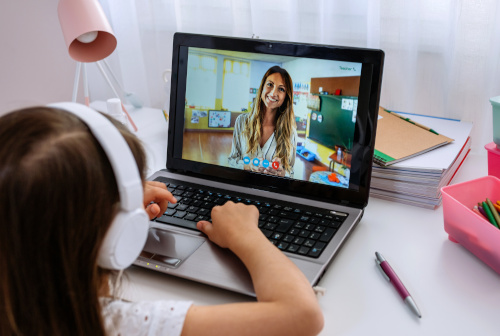
This school year marked the first “almost normal” school year since the 2018-19 school year. Most began the school year with mask mandates, and many quarantined entire classes or grades due to COVID-19 outbreaks, but schools remained open and students filled classrooms.
The fact remains that learning is forever changed. The pandemic highlighted vast inequities in communities across the nation, teacher burnout increased tenfold, and the issue of students’ learning preferences–in school, hybrid, or online–attracted more debate.
A series of factsheets from the Clayton Christensen Institute explores five insights about post-pandemic education, backed by data, which could have major implications for schools and districts as they prepare for the 2022-23 school year.
The Institute undertook a two-year series of nationally-representative surveys to track the adoption of online learning in the wake of the COVID-19 pandemic to better understand its various uses and associated instructional practices.
How are teachers blending and personalizing learning in post-pandemic education settings?
The Institute defines blended learning as: “A formal education program in which a student learns at least in part through online learning, with some element of student control over time, place, path and/or pace, and at least in part in a supervised brick-and-mortar location away from home (such as school). The modalities along each student’s learning path within a course or subject are connected to provide an integrated learning experience.”
Pre-pandemic, 69 percent of teachers used some form of blended learning. Blended learning use declined from pre-pandemic levels, but roughly half of all teachers (49 percent) still used some form of blended learning during this most recent school year.
Personalized learning is defined as: “A pedagogical philosophy, tending to refer to
a host of efforts and modalities (blended learning is one such modality) that tailor learning and development to the individual student, based on beliefs about what outcomes educators want students to reach and how to best help them get there.”
Personalized learning takes the form of regular small groups (65 percent of teachers reported using this method), student agency (62 percent), blended learning (49 percent), and flexible pacing (41 percent). Just 21 percent of teachers reported using all the personalized practices in the study.
Teachers who used blended learning were much more likely to also use personalized learning practices than teachers who did not use blended learning, the research found.
In general, despite education’s rapid shift to online and hybrid learning immediately following the pandemic, neither teachers nor administrators indicated they view online learning as a highly effective instructional model (both groups rated it as a 4.3 on a 10-point scale, with 10 indicating the most effective model).
Which instructional resources do educators rely on?
The primary curriculum sources teachers reported using in their classrooms didn’t match what administrators reported as the primary curriculum for their schools.
Thirty percent of teachers use materials they have created for their own use as their primary curriculum source, while 15 percent of administrators believe the same. Eleven percent of teachers use commercial print curriculum as their primary curriculum, while 37 percent of administrators report this as the primary curriculum in their schools.

